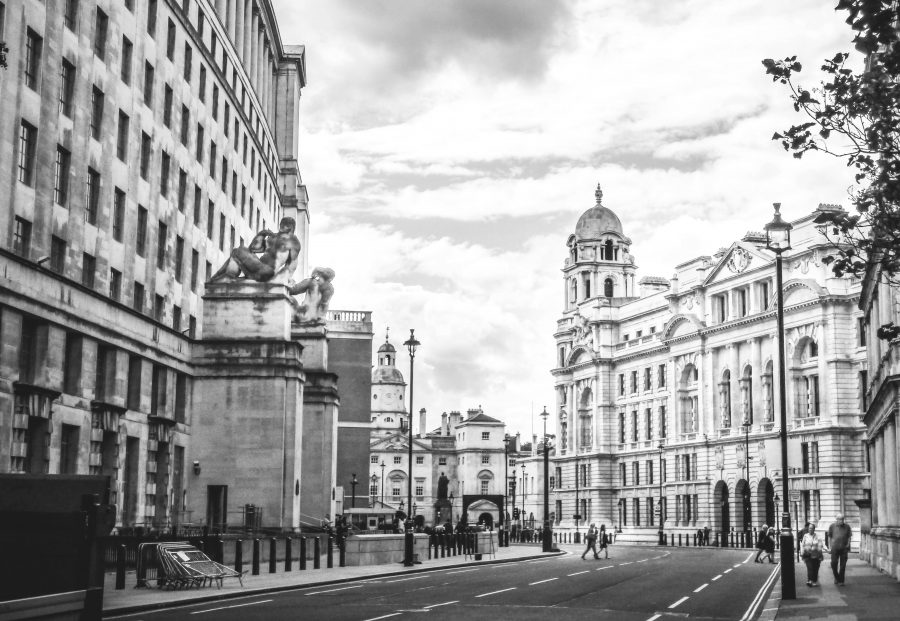Another speech from Downing Street will not turn around the economy – a vaccine will.
In mid-July, Prime Minister Boris Johnson gave a speech suggesting that employers start bringing their staff back to work. In the coming weeks I believe this attempt to engineer a faster recovery will be keenly and sceptically watched by the advocates of monetarist economics, who argue that politicians have huge powers to hinder growth but are near powerless to initiate it.
True to the monetarist narrative, Mr Johnson proved he could bring much of our economy to a standstill in March, albeit for the very good reason of saving lives. Since then, the elephant in the room has been: “how easy will it be to restart growth?”
Afterall, nine million workers are on furlough, with 80% of their pay coming from the government. This situation ends in October, but without the V-shaped recovery initially predicted back in March, we will probably face an autumn surge in unemployment. That could dampen any initial recovery for retail and hospitality arising from the reopening of shops and bars in June and July.
The redundancies are already coming in thick and fast from traditional retailers, as are the bankruptcies. Many big high street chains went into this downturn already limping, due to the disruption brought by the rise of e-commerce.
So, true to the monetarist narrative, the government has the power to do something negative, but can it prove them wrong by doing the positive thing and truly (not just partially) restart the economy? It is certainly trying, with a cut on VAT for hospitality, and reducing Stamp Duty Land Tax for homes worth less than £500,000. However, a redundant worker is not going to buy a new home, and will certainly cut back on dining out. There are infrastructure projects planned, but these take a long time to gear up.
At best, these are attempts to nudge the economy in the right direction, and the same is true of the Prime Minister’s call for a return to work. Mr Johnson even acknowledged he can only request employers consider bringing workers back, as only they can decide what is viable.
Many employers, fearing litigation, will do this in consultation with staff. They will then encounter the true threat of the virus to economic growth. People feel safe working, but it is the overcrowding getting to work that is the problem; whether that is on the train or bus, or even the entrance halls and lifts of commercial buildings.
There is also a question of volume. The new social distanced offices are awash with tape and red signs, and unable to house a fraction of the staff they did before. If there are half the workers in the offices, that is half the demand for nearby cafes, pubs and shops. My local pub on a Saturday night has every available table full, but pre-lockdown it had twice as many tables, and a crowd of drinkers ‘propping up’ the bar. On several levels, the volume of activity for many industries is being smothered by the virus.
The hard truth is that our economic output in April fell to 80% of what it was in March, and it only marginally improved in May. June and July have seen the economy further reopen, but one would have to be a tremendous optimist to predict a return to March levels anytime soon. Yes, some still talk of a v-shaped recession, but remember that the start of a w-shaped recession resembles a ‘v’.
In April, The Economistjournal ran an editorial talking about the “90% economy”, which feels about right as a ceiling growth can reach so long as the virus is a day-to-day reality. Returning to the 100% economy needs the “return to normal” that the Prime Minister hopes may occur in November.
However, a return to normal is only something he can hope for, it is not in his gift. The pub can be crowded again, the office can fill every desk, no one will be afraid to ride trains or sit in a packed cinema only when we have herd immunity. The fastest way to herd immunity is a vaccine.
So, the monetarists superficially look correct – the politicians can halt growth but not genuinely spark it. Yet, I would say they are right for the wrong reasons. The way back to normalised growth is not from the invisible hand of the free market correctly allocating resources to the most successful sectors, but from scientists discovering the nemesis for Covid-19.
There have been some encouraging signs on this recently. However, even the front runner – Oxford University’s vaccine – is expected (if it does successfully complete trials) to see an autumn roll-out in a best-case scenario. Even then, the roll out will be phased, so reaching the 60%-70% herd immunity figure looks unlikely this year. That is with lots of accompanying ‘ifs’ and ‘buts’, and with the risk phase three trials might still be unsuccessful.
From an economic perspective, a return to normal is looking like a 2021 event. Even then, expect a gradual recovery. Tecessions that require large numbers of people to change industry entirely, as will be the case for many in retail, hospitality and air travel, are like escaping from quicksand.
We should be ready for an economy in 2021 looking to reshape itself around new realities. Post-Covid we could see shorter supply chains bringing more manufacturing back onshore, as problems acquiring PPE and drugs have highlighted the drawbacks of dependence upon imports. Far fewer businesses will operate from retail premises now the virus has rapidly accelerated changes that were underway pre-Covid. The scientific, research and medical sectors will have a more prominent place in our economies. Offices will become landing pads for executives who operate from them to meet clients and catch-up with colleagues.
A lot of change is coming, and real estate investors need to adapt strategies and allocations accordingly.








